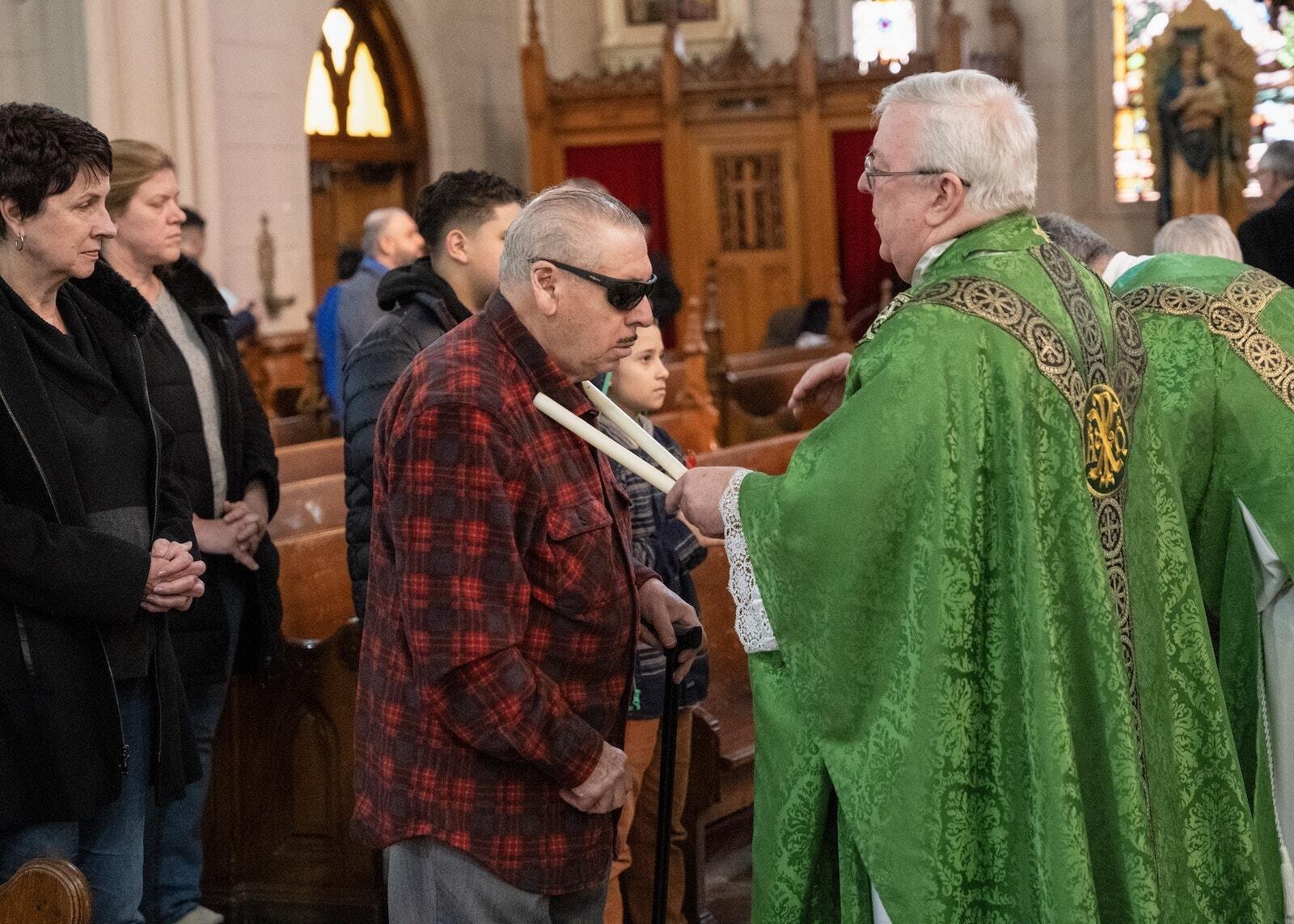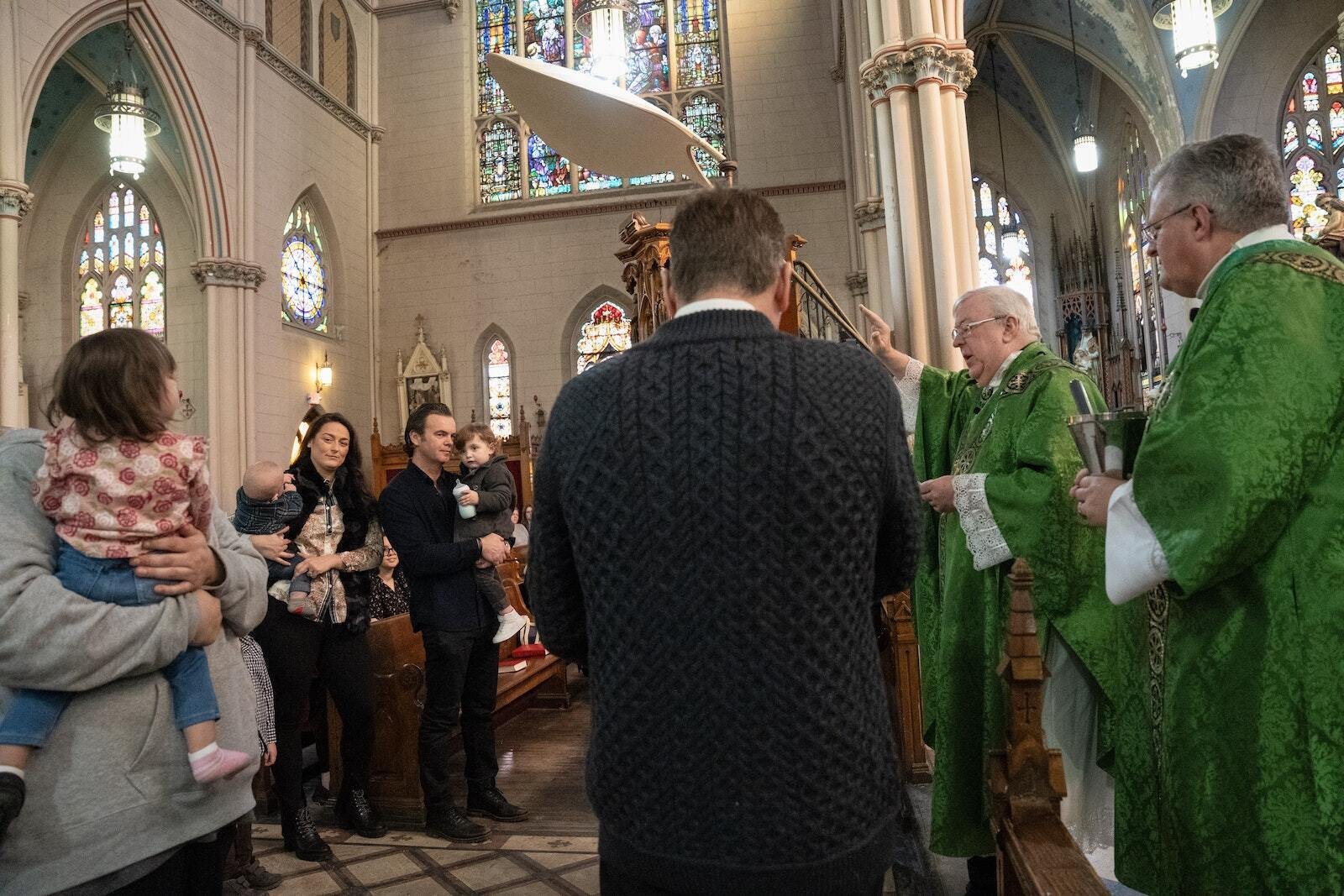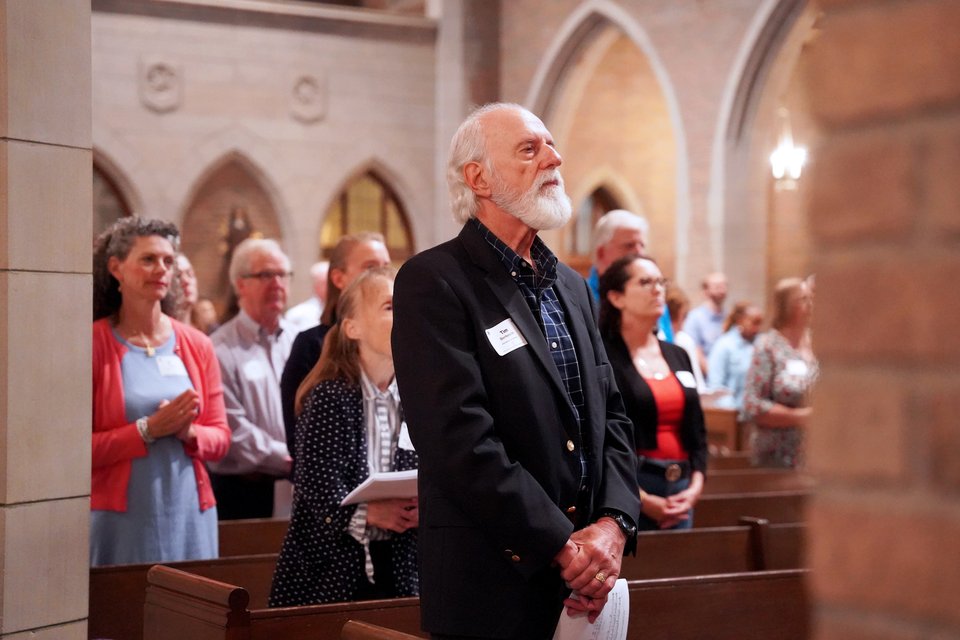Basilica celebrates Hispanic tradition dating back centuries by blessing infants, toddlers on the Feast of the Presentation of the Lord
DETROIT — As Sunday Mass came to a close at the Basilica of Ste. Anne on Feb. 4, parishioners were welcomed to the front of the sanctuary by Msgr. Chuck Kosanke for two very special blessings — the blessing of the infants and young toddlers during the feast of Candlemas and the blessing of the throats for the feast of St. Blaise.
Candlemas, or the feast of the Presentation of the Lord in the Temple, takes place 40 days after Christmas on Feb. 2, commemorating Mary’s obedience to the Jewish law of presenting herself in the temple following the birth of a male child. Mary, Joseph and Jesus presented themselves to the priest Simeon, who had been told by the Holy Spirit that he would not pass away until he had seen the Messiah.
Don't miss another story
Did you know you can get Detroit Catholic's latest daily or weekly articles delivered to your inbox? It's easy and free to sign up.
Upon seeing the Christ child, Simeon took Jesus into his arms and said, “Now, Master, you may let your servant go in peace, according to your word, for my eyes have seen your salvation, which you prepared in sight of all the peoples, a light for revelation to the Gentiles, and glory for your people Israel” (Luke 2:29-32).

This “light for revelation” is traditionally represented by a candlelit procession on Feb. 2. Those candles are then used for the blessing of the throats on Feb. 3, invoking the intercession of the fourth-century Armenian bishop and martyr, St. Blaise, who said that anyone who lit a candle in his memory would be free from infection.
However, within the primarily Hispanic parish of Ste. Anne, the presentation and blessing of the infants and toddlers has an even more profound cultural significance dating back centuries, Msgr. Kosanke explained.
“This tradition goes back a few hundred years in Mexico because oftentimes families would not see a priest for a couple of months or even longer,” Msgr. Kosanke said. “They were waiting for the baptism, but they still would want their children to be blessed with a prayer of protection before the baptism took place. There would be a presentation asking God to protect the children from harm, especially, at the time, in the third world when the infant mortality rate was pretty high.”
Other Hispanic communities also celebrate by bringing in statues of the infant Jesus from their home Nativity sets to the church to be blessed by the priest. The "Blessing of the Bambinelli" was first instituted by Pope St. John Paul II, and is sometimes celebrated on the Third Sunday of Advent.
Between the 10 a.m. Spanish Mass and noon English Mass at the basilica, approximately two dozen children up to the age of 3 were brought forward by their parents for a blessing — including one who had not yet been baptized, Msgr. Kosanke said.


The presentation isn’t just about physical protection, Msgr. Kosanke added.
“When you present a baby to God, you’re offering the baby to God so that whatever God’s will is for that child, whatever that may be in the future, the hope would be that the child would follow God’s plan for him or her,” Msgr. Kosanke said.
While these traditions aren’t practiced in every Catholic parish, Msgr. Kosanke believes carrying on the traditions and customs that many parishioners brought with them from their homelands is essential.
“It is important to focus on the spiritual needs of the people,” Msgr. Kosanke said. “If that blessing, whether it is of the infant or the throat, means something to that person, then I don’t do it because I have to do it — I do it with joy.”
The blessing of the infants also represents a hopeful future for the Church, he added.
“You know, every once in a while, you can encounter a parish church where there are a lot of senior citizens, which is not a bad thing, but blessing these young children today is always a great sign of hope and encouragement because they are the future of the Church,” he said.
Copy Permalink
Liturgy and devotions












